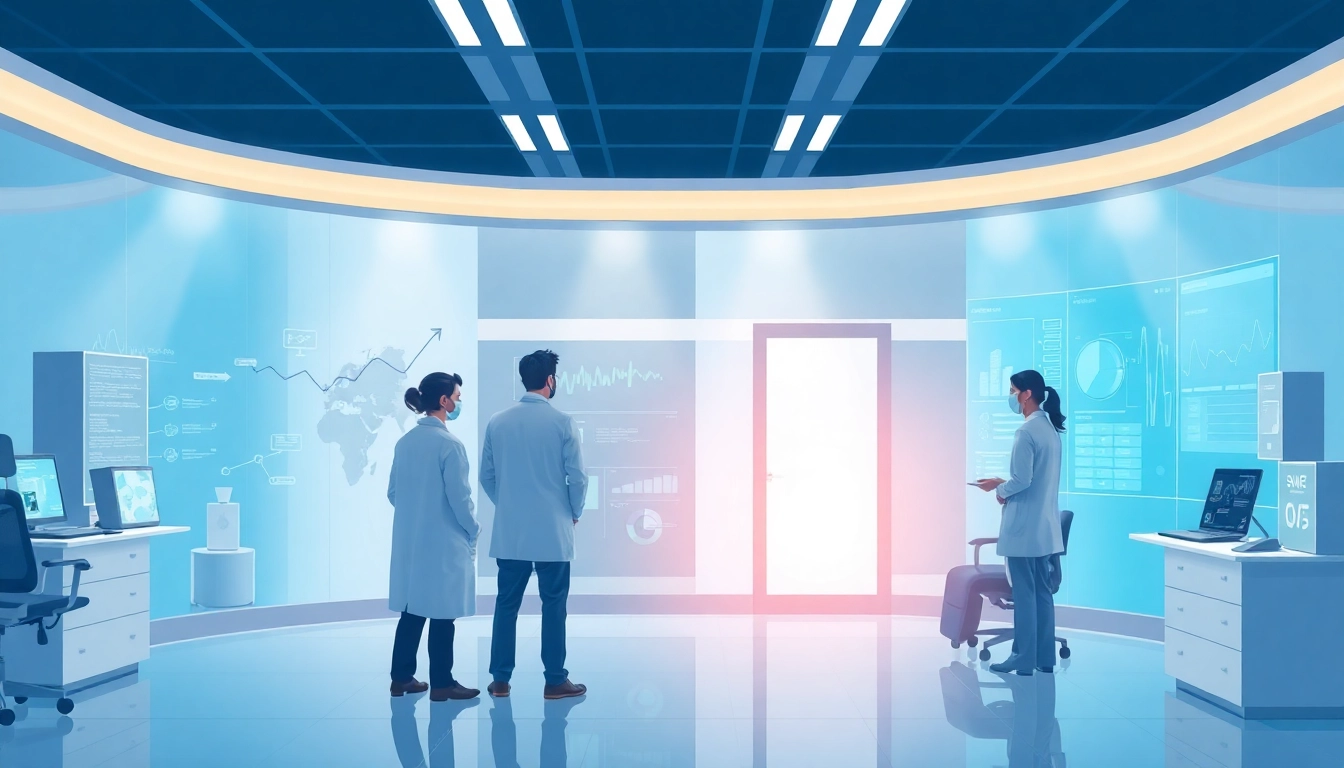Understanding Health Informatics
What is Health Informatics?
Health informatics is an interdisciplinary field that utilizes data, information technology, and knowledge to improve healthcare delivery and outcomes. Through the systematic application of informatics, healthcare professionals aim to enhance patient care, promote health, and facilitate research, thereby serving as an essential framework for modern healthcare systems. To delve deeper into the rich landscape of health informatics, resources such as https://www.informaticsview.com provide useful insights and information.
The Role of Technology in Healthcare
Technology plays a crucial role in health informatics by automating workflows, enhancing communication, and enabling the efficient management of patient data. Electronic Health Records (EHRs) serve as a foundational technology, allowing healthcare providers to track patient histories, diagnoses, treatments, and medications in a digital format. Another facet of technology in healthcare is telemedicine, which allows for remote consultations, therapeutic interventions, and continuous patient monitoring, especially significant in areas with limited access to in-person medical services.
Key Components of Health Informatics
Several key components define the scope of health informatics, including:
- Data Management: Essential for organizing and maintaining patient information, clinical data warehousing, and health information exchange.
- Clinical Decision Support Systems (CDSS): These systems help healthcare providers make informed decisions by providing evidence-based recommendations.
- Telehealth Solutions: These tools facilitate communication between patients and healthcare providers, ensuring timely diagnosis and treatment.
- Population Health Management: Involves analyzing data across different populations to improve health outcomes and reduce healthcare disparities.
- Health Information Technology (HIT): The broad application of IT in healthcare settings for managing and exchanging health information securely.
The Benefits of Implementing Informatics Solutions
Improving Patient Care Quality
Implementing health informatics solutions greatly enhances the quality of patient care. By providing access to accurate and up-to-date health information, healthcare professionals can make better clinical decisions, reduce errors, and improve patient outcomes. For instance, structured documentation in EHRs leads to better data accuracy and enhances communication among care teams, ultimately resulting in safer healthcare practices.
Streamlining Healthcare Processes
Health informatics streamlines healthcare processes by automating routine administrative tasks, which not only frees up time for healthcare professionals but also reduces operational costs. For example, appointment scheduling systems and automated billing processes can lead to increased efficiency within healthcare facilities. Moreover, interoperability among different healthcare applications enables smoother transitions of care and reduces the likelihood of data silos.
Facilitating Better Data Management
The management of health data is fundamentally transformed through informatics. Comprehensive data management systems aggregate information from disparate sources, allowing for greater accuracy in patient records. Data analytics, predictive modeling, and machine learning techniques can be applied to this data to uncover trends, inform public health initiatives, and promote personalized medicine tailored to individual patient needs.
Challenges in Health Informatics
Data Privacy and Security Issues
As technology advances, so too do the challenges of maintaining data privacy and security. Healthcare organizations must comply with regulations such as HIPAA (Health Insurance Portability and Accountability Act) in the U.S. to protect patient information from unauthorized access. Data breaches can result in severe consequences, including financial penalties and loss of patient trust. Implementing robust cybersecurity protocols is essential to safeguarding sensitive health information.
Integration with Existing Healthcare Systems
Integrating informatics solutions with existing healthcare systems can be a complex endeavor, especially in organizations that utilize legacy systems. The compatibility of new technologies with older systems can pose significant challenges. To address this, organizations should conduct thorough assessments of their current infrastructure and ensure that any new solutions are compatible and capable of seamless data exchange.
Training Healthcare Professionals
Successful implementation of health informatics hinges on the proficiency of healthcare professionals with emerging technologies. Continuous education and training programs are necessary to equip staff with the skills they need to effectively utilize these tools. Establishing a culture of collaboration, where staff can exchange knowledge and share best practices, can also enhance comfort levels with new technologies.
Future Trends in Health Informatics
Artificial Intelligence in Healthcare
Artificial intelligence (AI) is rapidly becoming a cornerstone of health informatics, offering transformative potential in predictive analytics, personalized medicine, and diagnostic imaging. AI algorithms can analyze vast datasets to identify patterns that may not be visible to human practitioners. Tools such as natural language processing enable the abstraction of valuable insights from unstructured clinical notes, while machine learning can enhance clinical decision support by providing timely recommendations based on patient data.
Telemedicine and Remote Health Monitoring
The rise of telemedicine has accelerated due to the COVID-19 pandemic, establishing it as a blueprint for future healthcare delivery. Remote health monitoring devices and applications allow healthcare providers to keep track of patients’ health metrics in real-time, facilitating prompt interventions when necessary. With technology continually advancing, virtual consultations and remote monitoring are expected to become integral to standard care practices.
The Growth of Big Data Analytics
As healthcare systems gather more data, the role of big data analytics will continue to expand. The ability to analyze large volumes of data assists healthcare organizations in deriving actionable insights, forecasting patient outcomes, and optimizing resource allocation. Through sophisticated analytics, organizations can identify at-risk populations and tailor interventions accordingly, leading to population health improvements and better managed care pathways.
Getting Started with Your Health Informatics Strategy
Assessing Your Current Systems
Before embarking on a health informatics initiative, it is crucial to assess existing systems and processes. Organizations should evaluate their technology infrastructure, identify gaps in data management, and understand the needs of healthcare providers and patients. Conducting a thorough assessment will lay a strong foundation for informed decision-making as they progress in selecting and implementing new informatics solutions.
Choosing the Right Solutions
Selection of the right health informatics solutions tailored to organizational needs is paramount. Factors to consider include ease of integration with existing systems, user-friendliness, and the potential for scalability. The involvement of key stakeholders, including IT professionals, healthcare providers, and administrative staff, in the decision-making process will ensure a well-rounded perspective on which systems will best support healthcare delivery goals.
Measuring Success in Health Informatics
Establishing performance metrics is critical for assessing the success of health informatics implementations. Organizations should define clear objectives and key performance indicators (KPIs) linked to specific outcomes such as patient satisfaction, clinical effectiveness, and operational efficiency. Regular reviews of these metrics will help organizations iterate and improve their informatics strategies over time, ensuring they meet the evolving demands of the healthcare landscape.



